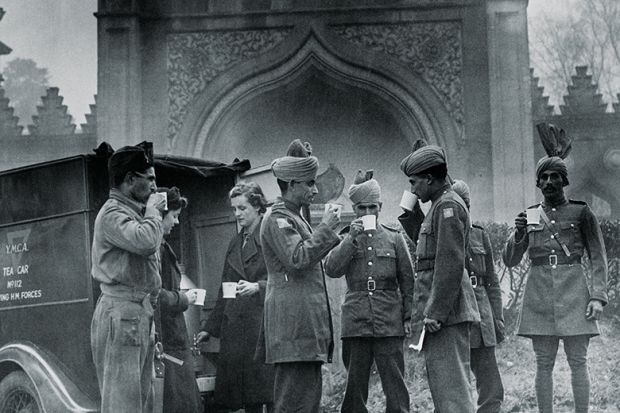Was tea the engine of empire and creator of the global economy? The importance of tea, its production, consumption and trade, has long been recognised by economic, cultural and imperial historians, but in this wide-ranging and vividly illustrated study, Erika Rappaport makes the case for the thesis that the thirst for tea was the force that shaped the modern world.
From the time the Chinese began to grow the plant and drink the refined leaf, tea had been seen as more than just a beverage, being touted as beneficial to health and character, and its drinking in China and then Japan came to be entwined with elaborate ceremonies influenced by Buddhist and Taoist beliefs. Brought to Europe, first via the Silk Road then subsequently by ships of the Dutch East India Company, tea acted as a means of cultural transmission, with its proponents taking from China the view that it “led to bodily health, psychic content, and a more productive and sober self”. Its popularity stimulated an interest in all things Chinese, and in Britain, where tea was well established by the mid-18th century among genteel society, it helped to inspire a craze for imported silks, porcelain and lacquer, and for a chinoiserie that influenced architecture, gardens and interior designs, while the drinking of a novel and expensive commodity was accompanied by ritual and decorum.
It was not until the 19th century that tea moved down the social ladder, a process encouraged and applauded by radicals and social reformers, who saw it as a means of social improvement, claiming that it made people healthier (a dubious claim given the practice of adding sugar), more hard-working and, above all, sober. As William Cowper wrote, it provided cups that “cheer but do not inebriate”. Rappaport may overestimate the impact of such propaganda, for popular habits and culture were largely impervious to preaching, and it is more likely that it was the positive attractions of a convenient and satisfying brew that led to the British becoming fond of tea. But what sort of tea?
Tea for most Britons meant tea from China, and as this book demonstrates, it took decades of advertising to persuade consumers to switch to the products of the empire’s plantations and to establish as both normal and patriotic the purchase of tea from India or Ceylon, thus enabling a more prosperous consumer society to underpin the expansion and profitability of the empire. By the 20th century, tea linked producers and consumers, including Indian workers, London traders and the expanding chain stores of British retailers in a complex imperial economy. The British self-image became that of a nation addicted to its cuppa at the head of an imperial family of tea drinkers, an image that underpinned the war effort in both world wars.
This remarkable synthesis of imperial and consumer history concludes that, even after the end of the empire, the tea trade survived as a major force in the post-colonial world and in a global economy where, if Europe-based multinationals such as Unilever still control most of the trade, they have been joined as rulers of the empire of tea by India’s Tata conglomerate.
A. W. Purdue is a visiting professor of history at Northumbria University and is co-author, with J. M. Golby, of The Civilisation of the Crowd: Popular Culture in England 1750-1900 (1984 and 1999).
A Thirst for Empire: How Tea Shaped the Modern World
By Erika Rappaport
Princeton University Press
568pp, £32.95
ISBN 9780691167114 and 9781400884858 (e-book)
Published 20 September 2017
POSTSCRIPT:
Print headline: A global storm in a teacup
Register to continue
Why register?
- Registration is free and only takes a moment
- Once registered, you can read 3 articles a month
- Sign up for our newsletter
Subscribe
Or subscribe for unlimited access to:
- Unlimited access to news, views, insights & reviews
- Digital editions
- Digital access to THE’s university and college rankings analysis
Already registered or a current subscriber?




